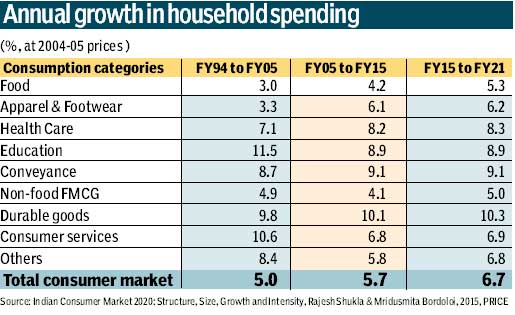As India continues to evolve as an economic power in the global scenario, Consumerism is undergoing tremendous changes in the business arena. Liberalization, Globalization and Increasing income and purchasing power among the people of India can be attributed as the main reasons for the prevalent market trend and changing consumer behaviour in India. The affluence levels have exerted tremendous influence over the consumer market and changing consumer behaviour in India.
Few changes in the Indian consumer market are:
- The consumers have become more aware, demanding and quality conscious.
- Liberalization and globalization has increased competition giving rise to consumer oriented products and marketing techniques.
- The overall costs are rising, prices are falling and profit margins are decreasing.
Changing Consumer Behaviour in India
Consumer Behavior has gone through many changes in the attitude, motivation, perception, spending habits, and post purchase behaviour during the past few decades in India. Some of the key factors that have contributed towards changing consumer behaviour in India are:
- Rapid Urbanization leading to changes in the mindset of consumers
- Increasing income levels
- Shift in approach towards family systems
Rapid Urbanization
In 1980`s, a typical consumer in India had very limited choices. Consumer choice was restricted by low income, supply shortages, non-availability of products, traditional buying methods, low competition, limited choice, import restrictions. Rapid urbanization in the country is brought a huge change in the mindset of Indian population. Liberalization and globalization in the 1990`s opened new avenues for marketing, advertising, travel and communication which in turn helped in increasing the GDP of the country. Innovative marketing techniques, increasing competition and product branding made the consumers more aware, demanding and quality conscious. Now consumers have wide product choices at competitive prices.
Increasing income levels
Increasing households Income have increased the spending capabilities of people, making India one of the top countries in the Consumer market segment. Now consumers do not settle for sub-standard products but demand high quality products at competitive prices. Consumers have access to abundant information through newspapers, T.V. and internet which bought about a change in marketing techniques of businesses. Marketers strive to differentiate their products and services through pricing, packaging, promotions, customer service and branding. With radical revolution in information technology consumer satisfaction was given more importance as consumer expectations had increased and all consumers had multiple options to satisfy their respective needs.

Shift in approach towards family systems
India has been witnessing a shift with respect to family systems and family influence on consumer behaviour. Joint families are decreasing in number giving way to nuclear families. The spend ratio has increased by leaps and bounds owing to the increasing number of nuclear family systems. Lifestyle amenities get more priority amidst the younger generation who opt for nuclear family structures. Less number of Gatekeepers and matured influencers in such nuclear families gave rise to what was considered as ‘unnecessary spending’ by earlier generations. The food, apparel and entertainment industries have gained maximum owing to the tendency of the younger generation to keep up with the latest trends at all points of time.
However, marketers must keep the following points in mind to effective adjust to the changing consumer behaviour in India –
- It is essential to communicate with customers.
- All marketing efforts must be directed towards the customer.
- Products and services must be developed keeping in mind the needs and desires of consumers.
- Efforts must be made to understand the mindset of the consumer for which a feedback mechanism must be developed.
- All strategies must aim at providing customer satisfaction and delight.